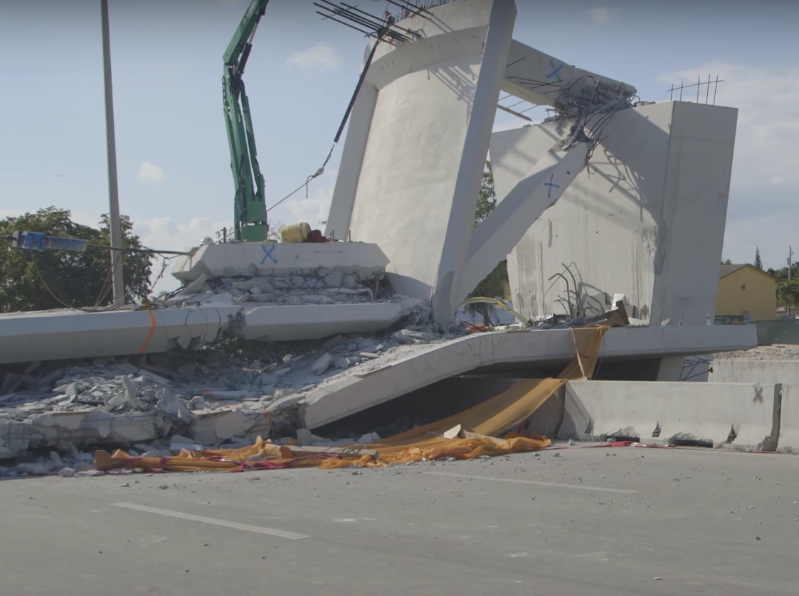
A preliminary report released by the National Transportation Safety Board (NTSB) indicates errors were made at the design stage, ultimately resulting in the the fatal pedestrian bridge collapse at Miami’s Florida International University (FIU) campus. The incident resulted in the deaths of six individuals and injury to eight others.
Two days prior to the collapse, cracks at one end of the bridge’s concrete span were reported to the Florida Department of Transportation however they were not believed at the time to represent significant faults.
The NTSB report indicates design errors at a critical connection point on the bridge resulting in an overestimation of bridge capacity and an underestimation of demand. The design review included in the NTSB’s preliminary report was conducted in support of the ongoing investigation by the Federal Highway Administration’s Office of Bridges and Structures, an additional party to said investigation.
Test findings collected from concrete and steels specimens taken from the bridge after its collapse show that the materials met the project plan’s specified minimum requirements. Numerous tests, conducted by the The Turner-Fairbanks Highway Research Center, part of the Federal Highway Administration, found the following:
- Concrete core specimens from the bridge deck and bridge canopy met the compression requirements in the project plans;
- The design plans specified concrete used for the project had to be in accordance with Florida Department of Transportation specifications. All specimens from the bridge deck and bridge canopy were within the specified range for total air content; and
- Tension test results of size #5, #8 and #11 steel reinforcing bars revealed all met minimum yield and tensile strengths and percent elongation at fracture, for their respective sizes. Size #7 bars could not be tested due to collapse-induced deformation.
Despite these materials tests indicating minimum requirements were met, a miscalculation at the design stage in determining the actual capacity and demand requirements of the bridge could mean those minimums requirements are invalid.
At this stage, the NTSB investigation is currently ongoing and any information outlined in this report may be subject to change as further information comes to light.
You can read the NTSB’s full mid-November report here. For more info on construction and personal injury news, check out our blog.
